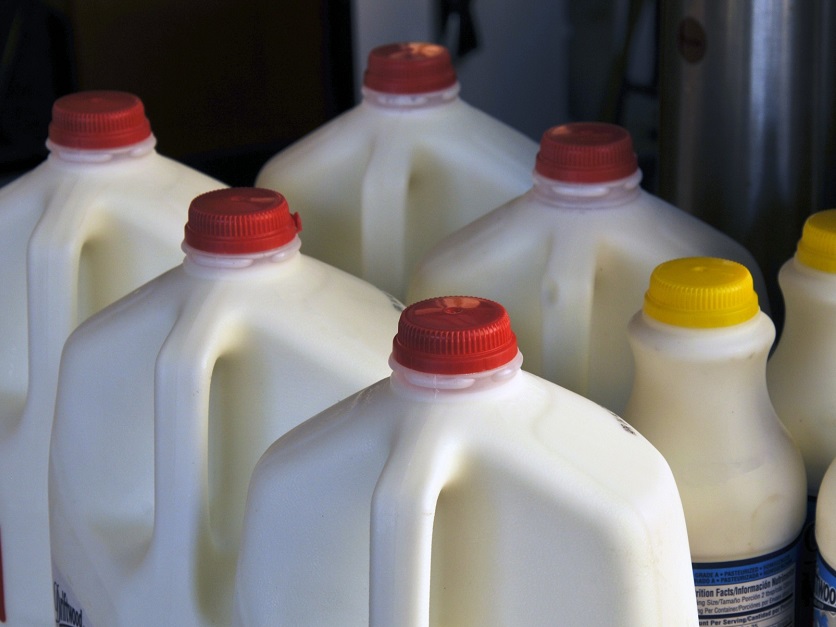WASHINGTON, June 7, 2017 - No new U.S. milk producers have been allowed to enter the growing Chinese market for more than a year, but that’s about to change.
Dense bureaucracy and a shift in Chinese policy are blocking U.S. dairy processors from getting the clearance they need to export milk to China, but a breakthrough is expected in a matter of weeks, according U.S. dairy industry officials.
The U.S. Dairy Export Council (USDEC) has been working for months with Chinese regulators, the Food and Drug Administration, the USDA and other agencies to increase the flow of U.S. milk to China and an agreement is finally in place.
USDEC President and CEO Tom Vilsack told Agri-Pulse in an interview that a new deal will give immediate clearance for 80 U.S. processors to begin shipping milk to China.
“I think we’re a matter of weeks away from getting that resolved,” said Vilsack, who was President Barack Obama’s Agriculture Secretary before taking the position at USDEC. “It required a memorandum of understanding between the FDA and the Chinese officials, but it was stuck in the FDA for a considerable period of time.”
About three years ago China announced broad new food safety regulations that required all foreign milk suppliers to be registered and certified by their domestic regulatory agencies (that’s the FDA in the U.S.) before they could ship to China.
The rules were published in 2014 by China’s Certification and Accreditation Administration (CNCA) and Administration of Quality Supervision, Inspection and Quarantine (AQSIQ). The rules, which threw up a new, temporary roadblock for milk exports to China, went into effect on Jan. 1, 2016.
The FDA’s Center for Food Safety and Applied Nutrition set up a voluntary registry for milk exporters in 2014 to comply with the new rules, known as Decree 145, but U.S. industry officials said the agency hasn’t been effective in getting U.S. companies certified.
The U.S. companies that were already shipping to China were grandfathered in and continued to ship, but new petitioners have had to wait until the FDA figured out how to comply with the new Chinese regulations.
It has been a long wait, according to dairy industry officials who are troubled by losses to competition from exporters in Australia, New Zealand and elsewhere. Those exporters were under the same restrictions as U.S. producers and exporters, but U.S. regulators were lagging behind.
Vilsack said one of his first goals since getting the top job at USDEC in December was to huddle with officials there and work out a new approach to getting FDA certification. Together with Chief Operating Officer Matt McKnight, he got the certification process unstuck and put together the MOU that is expected to clear the way for additional U.S. producers to ship to China.
It was a long haul as the deal needed to be cleared by the FDA, Health and Human Services, the State Department and the Chinese agencies, which needed all of the documents translated into Chinese.
“It’s a big deal and it’s a good opportunity for us to expand exports,” Vilsack said.
The USDA’s Foreign Agricultural Service (FAS) is predicting that China will import 900,000 metric tons of milk this year, 39 percent more than the 650,000 tons the country was expected to buy last year and nearly double the 460,000 tons that it imported in 2015.
It’s a massive market, but the U.S. share is less than 1 percent, according to the FAS. The U.S. exported just $1.8 million worth of fluid milk and cream to China in 2015, a sharp drop from $5.6 million in 2014.
The 80-producer certification is a big step in bringing the U.S. up to par with competing milk from Australia and New Zealand, but it’s certainly not the end of the process. The memorandum of understanding will also make it easier for future certifications of U.S. producers, according to industry sources.
And Vilsack stressed that the work has just begun on building demand for U.S. milk and dairy products in the world’s most populous country. That’s why he recently visited China during an Asian trip that also took him to Japan and Singapore.
“We spent some time with Yum China,” Vilsack said. “That’s the outfit that owns and operates 7,800 Kentucky Fried Chickens, Pizza Huts and Taco Bells. They serve 2 billion customers per year. Their goal is to get to 20,000 stores, and they are anxious to purchase U.S. dairy products – everything from the cheese they use on pizzas to the butter they sell at KFC and the cream used for coffee.”
And milk from the U.S. is highly prized in China, where there is still strong distrust of domestic product because of past food safety scandals.
“Of course the Chinese are deeply concerned about the safety of dairy products and they have no concern about U.S. dairy products,” Vilsack said. “Obviously, the Chinese are working hard to create modern processing facilities to reverse that (concern), but it’s still prevalent.”
Meanwhile, domestic dairy production in China is on the decline while demand continues to increase.
“There’s infant formula, milk powder, cheese, protein whey products – it’s a big opportunity,” Vilsack said.
#30
For more news, go to: www.Agri-Pulse.com


